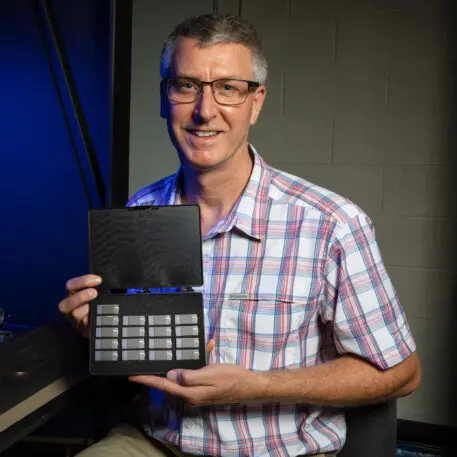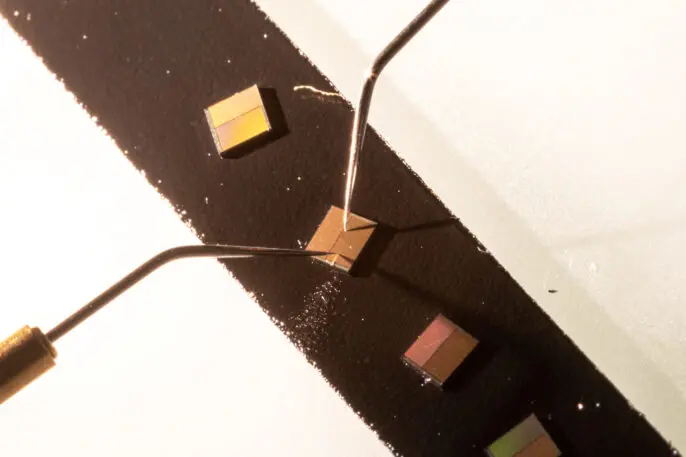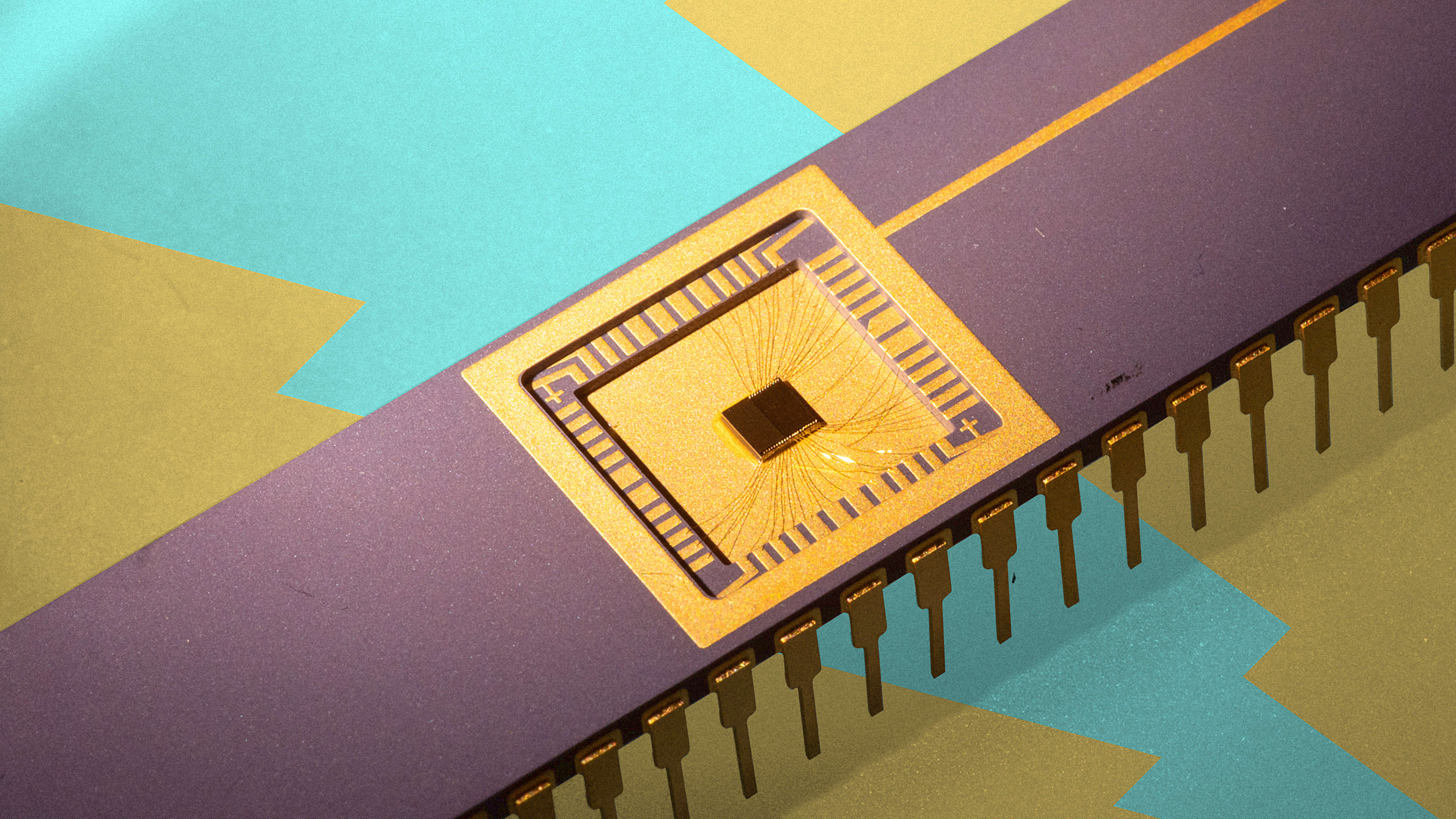Batteries are the great limiter of tech products today. They cap the range and affordability of our cars, the efficiency of our electrical grid, the reliability of our phones, and the flexibility of medical implants. With finite energy storage, our wireless electronics have to be recharged again and again.
But what if there were a battery that never needed to be recharged because it produced its own energy all of the time?
Now there is. Researchers at the University of Arkansas have developed a tiny generator/battery constructed largely out of graphene, the wonder material made from carbon. It not only stores energy but constantly produces it too.
In the near future, the team hopes to begin mass-producing these batteries as chips the size of a dime, allowing them to stick on small circuit boards to power all sorts of sensors and low-energy electronics on the market.
So how is this possible? How can a battery develop energy from nothing? Truth be told, it doesn’t.
As University of Arkansas professor Paul Thibado, who led the research, explains, there is energy all around us all the time. While we don’t see it with the naked eye, gas particles are in a constant torrent. That’s kinetic energy, the energy born from movement. And such movement is always present in room-temperature air, because temperature is really just vibration. The faster things vibrate, the warmer they are. That’s thermal energy.
Enter graphene: It’s a material theorized since the 1950s, which is really just carbon that’s formed to be a single atom thick. It’s literally a two-dimensional object with strange properties we’re only now learning how to capitalize on.

When that graphene sheet is attached to the right electrical components, its movement actually generates electricity, driving current through an electrode, and allowing it to be stored. While this theory was first proven in supercomputer simulations, Thibado’s team has actually produced graphene batteries and proved they can generate energy. (The only place they would fail would be a pitch-black vacuum at absolute zero—that is, –459.67°F, a temperature where there is no thermal energy present—because there would be no ambient energy to harness.)

This chip, 10 mm on a side, or roughly the size of a dime, would produce meaningful amounts of energy. Putting out an estimated 10 milliwatts, it produces enough electricity to power a pressure, temperature, or pulse sensor. You could imagine a fitness band that could track your heart rate without ever running out of power to do so. It’s also enough power to cover the baseline necessities of the Bluetooth low-energy standard (the main standard that sensors use to transmit data to phones and other devices). So you could imagine, with maybe a few of these chips working together, building a fitness band that could beam your heart rate data to your phone.
Indeed, the battery is particularly well-suited to the tiny, connected devices of the Internet of Things. “There’s an infinite number of markets, and this thing can scale up much larger. But the real question at this point is where do you start,” says Preston Carter, chief technology officer at NTS Innovations, who is also a former program director at DARPA and NASA. “Electronic devices . . . which are portable with lower-watt power consumption, will be low-hanging fruit for years.” As the battery evolves, Carter imagines they will work for medical implants, powering devices instead of a battery that might go dead. But in terms of powering your smartphone, that’s a lot further off—because smartphone processors need a lot of power to render video games and handle other tasks that require lots of calculations.
As for cost, Thibado estimates that the chips will cost the same as equivalently sized solar panels. Which means at a small size, they will cost next to nothing at all, much like the low-cost sensors they power.
Does this mean that graphene farms could replace solar farms, providing a new source of green energy for our power grid? Thibado pushes back on that vision a bit. For one, he admits that the team still has a lot to do to bring this technology to market. And second, he sees the benefit to be less about remaking our electrical grid than reconsidering where and how we generate power to begin with.
“Why not put power right where you need it?” he asks. “You don’t need to make a big monstrous object [like a generator] . . . you just put it in every little thing that needs it right where it needs it. I think that’s my best answer honestly . . . that’s what we envision, rethinking power and [how it’s] distributed.”
Recognize your brand’s excellence by applying to this year’s Brands That Matter Awards before the early-rate deadline, May 3.
